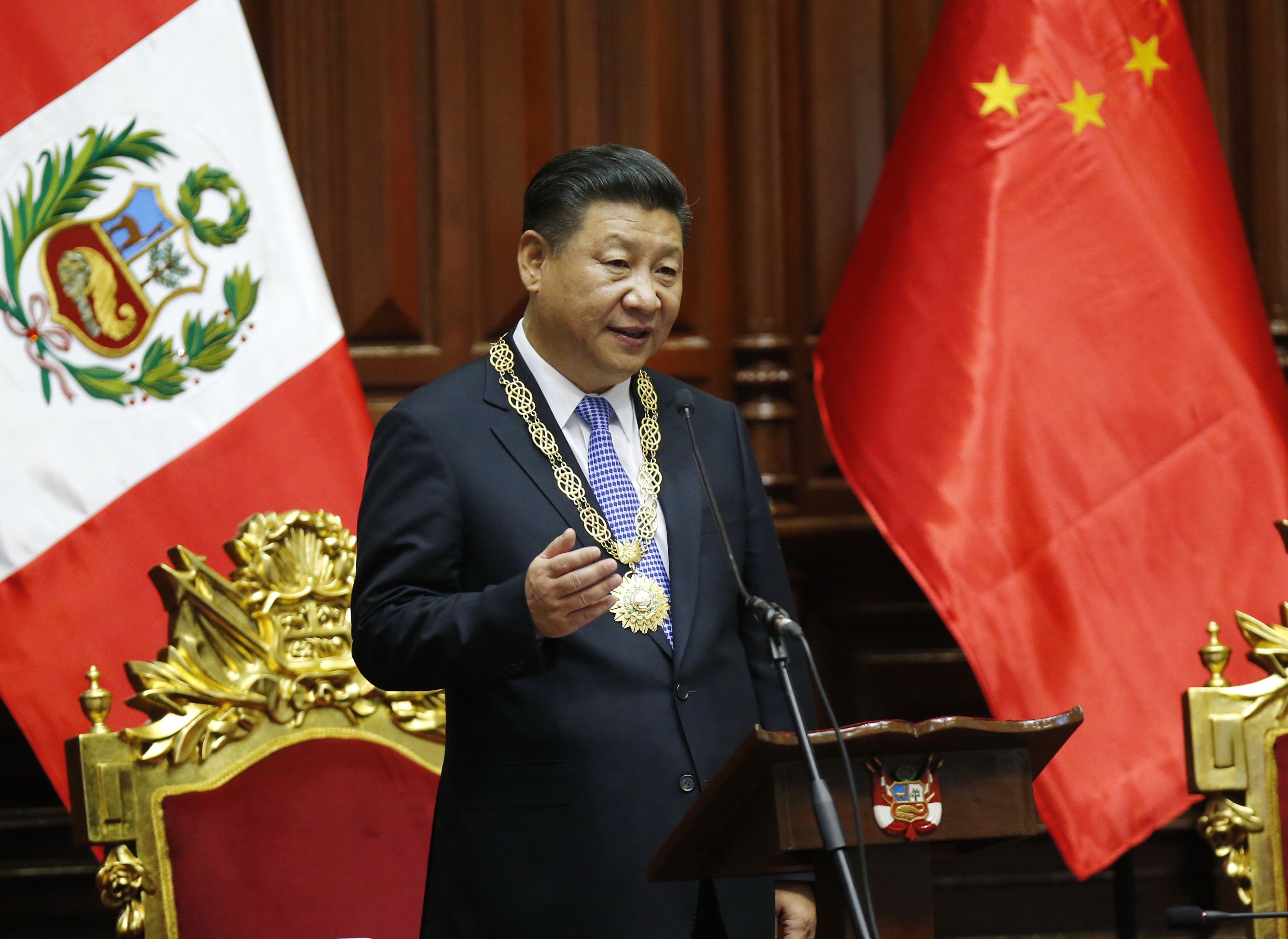Xi’s visit, new paper deepen China-Latin America ties

Chinese President Xi Jinping addresses the Peruvian Congress in Lima, capital of Peru, on Nov. 21. The visit to Peru was a leg of his Latin America tour from Nov. 17 to 23. Scholars said at a recent symposium that the president’s trip to the region will accelerate China-Latin America cooperation in all fields.
Scholars hailed Chinese President Xi Jinping’s recent visit to Latin America and a new government policy paper on the region at a symposium on Nov. 29 in Beijing.
The Symposium on “Outcomes of President Xi’s Latin America Visit and the Second China Policy Paper on Latin America and the Caribbean” was held by the Institute of Latin American Studies (ILAS) at the Chinese Academy of Social Sciences (CASS). It gathered more than 60 government officials and experts from domestic institutions for Latin American studies.
Xi paid state visits to Ecuador, Peru and Chile from Nov. 17 to 23, and attended the 24th APEC Economic Leaders’ Meeting in Lima, capital of Peru, on Nov. 20.
Participants in the symposium concurred that the president’s visit will accelerate China-Latin America cooperation in all fields.
Director of the ILAS Wu Baiyi noted that China is willing to give Latin American countries a “free ride” on its growth in order to further integrate bilateral development strategies, deepen pragmatic cooperation and share the fruits of its development.
“The high-level visit fully indicates that the role of China in global development has shifted from a ‘follower’ and ‘participant’ to a ‘contributor’ and ‘guide,’” Wu said.
Xi’s Latin America visit has achieved a series of major results. Zhang Run, deputy director-general of the Department of Latin American and Caribbean Affairs under the Ministry of Foreign Affairs, summarized the results.
First, the visit improves upon the layout of China-Latin America cooperation because China formed comprehensive strategic partnerships with all of the three visited countries. Moreover, it guides new developments of China-Latin America relations and speeds up collaboration, Zhang said.
Also it brings Chinese and Latin American peoples closer since China will increase the quota of Latin American trainees and establish a China-Latin America press center in the next three years, Zhang added.
Xi’s trip has come at a time when Latin America is undergoing profound changes. “The influence of major countries in the region, such as Brazil and Mexico, is on the decline, US trade protectionism is gaining ground, and the victory of Donald Trump in the presidential election has impacted the US-Latin America relationship,” said Sun Yanfeng, deputy director of the Institute of Latin American Studies at the China Institutes of Contemporary International Relations. “Yet the interest of Latin American countries in developing relations with China is generally on the rise.”
All these factors have presented strategic opportunities for China to enhance its ties with Latin America, Sun said.
In November 2016, the Chinese government released the second policy paper on Latin America and the Caribbean. The first one was issued in 2008, which proposed building a comprehensive partnership of equal standing, mutual benefit and joint development while setting goals for different stages of the partnership.
Since 2013, Chinese leaders led by Xi have put forward a series of initiatives for exchange and cooperation between the two sides in all areas.
In 2014, leaders of China and Latin American countries met in Brasilia and announced the establishment of the Forum between China and the Community of Latin American and Caribbean States (CELAC), ushering in a new stage of all-round cooperation.
Meanwhile, Xi proposed building a new five-dimensional relationship characterized by sincerity and mutual trust in the political field, mutually beneficial cooperation on the economic front, mutual learning and emulation in the cultural sphere, close coordination in international affairs, as well as synergy between China’s cooperation with the region as a whole and its bilateral relations with individual regional countries.
Through the second policy paper for Latin America, the Chinese government has reiterated its consistent position of valuing China-Latin America relations.
The new policy paper is a result of the times. Wang Peng, associate research fellow at ILAS, said that the new document fully articulates the major progress made in China-Latin America relations since 2008, making clearer China’s Latin America policy of building a community of common destiny, opening up the new five-dimensional relationship and exerting the role of overall cooperation.
